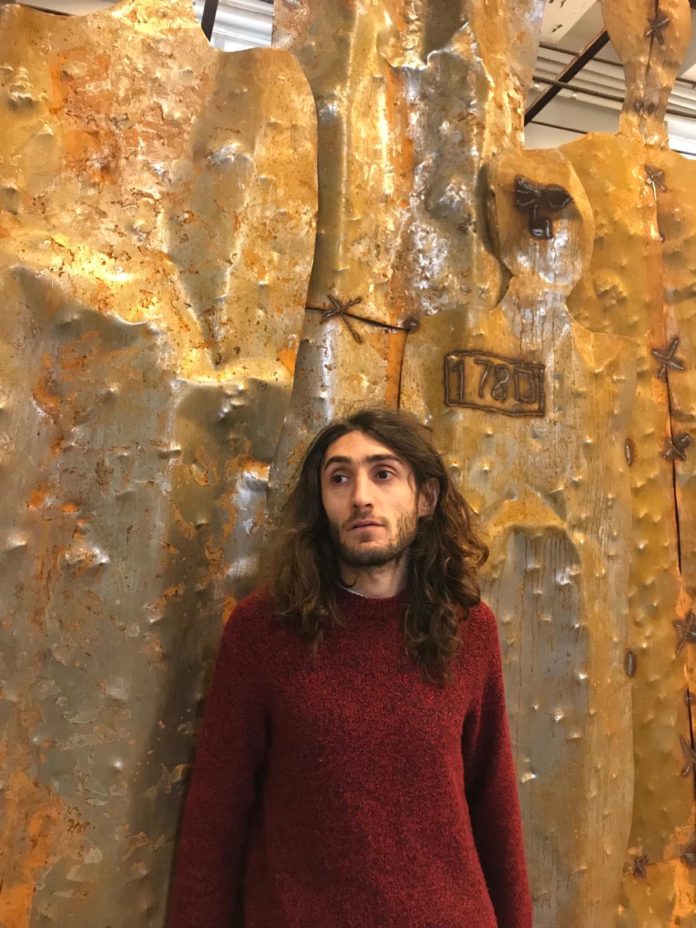By Artsvi Bakhchinyan
Special to the Mirror-Spectator
YEREVAN/SUOMENLINNA, Finland — Young sculptor Spartak Khachanov was born in Azerbaijan, lived in Armenia and Ukraine, and has now settled on a Finnish island.
Spartak, the first time I read about you was in the Washington Post, about how you were forced to leave Ukraine for Finland because Ukrainian nationalists demolished your exposition. In your opinion, was this incident an indirect PR coup for you?
On December 19, 2018, I launched my new project, “Parade of Phalluses.” It was of an anti-war nature, a satire on military parades around the world and was not an image of a specific army and state. The project was exhibited at the National Academy of Fine Arts and Architecture in Kyiv, where I was a fourth-year student. We were offered a free theme, and I exhibited my work in the central hall of the Academy. The exhibition took 100 meters in length. The teacher of the design department Vladimir Kharchenko, who was a volunteer in the war in eastern Ukraine, disliked it very much, considering that it a mockery of the Ukrainian army. He threatened and insulted me, and when he understood I was not going to remove the installation, he began to break it down and also invited his friends to the Academy — the neo-Nazi group “C 14” — who attempted to murder me. This situation went far beyond the borders of the Academy and Ukraine, they found out about me in many countries of the world, so that most likely became a PR problem for the entire outdated education system in Ukraine, where deans are 30 years behind, like Fidel Castro and other dictators. Thus, for the first time in my experience I learned that in Ukraine there is no freedom of speech, and neo-fascist organizations consider themselves curators and decide what art is and what is not. They can come to higher educational institutions to the exhibitions of artists and put everything apart. Dissatisfaction with my work and its destruction is not the first case in the last five years. And the citizens of Ukraine are hostages of the war – we are not allowed to express our opinion and we must remain silent.
You lived in different countries, among various cultures. In your opinion, how can contemporary art reflect what is called a national feature?










